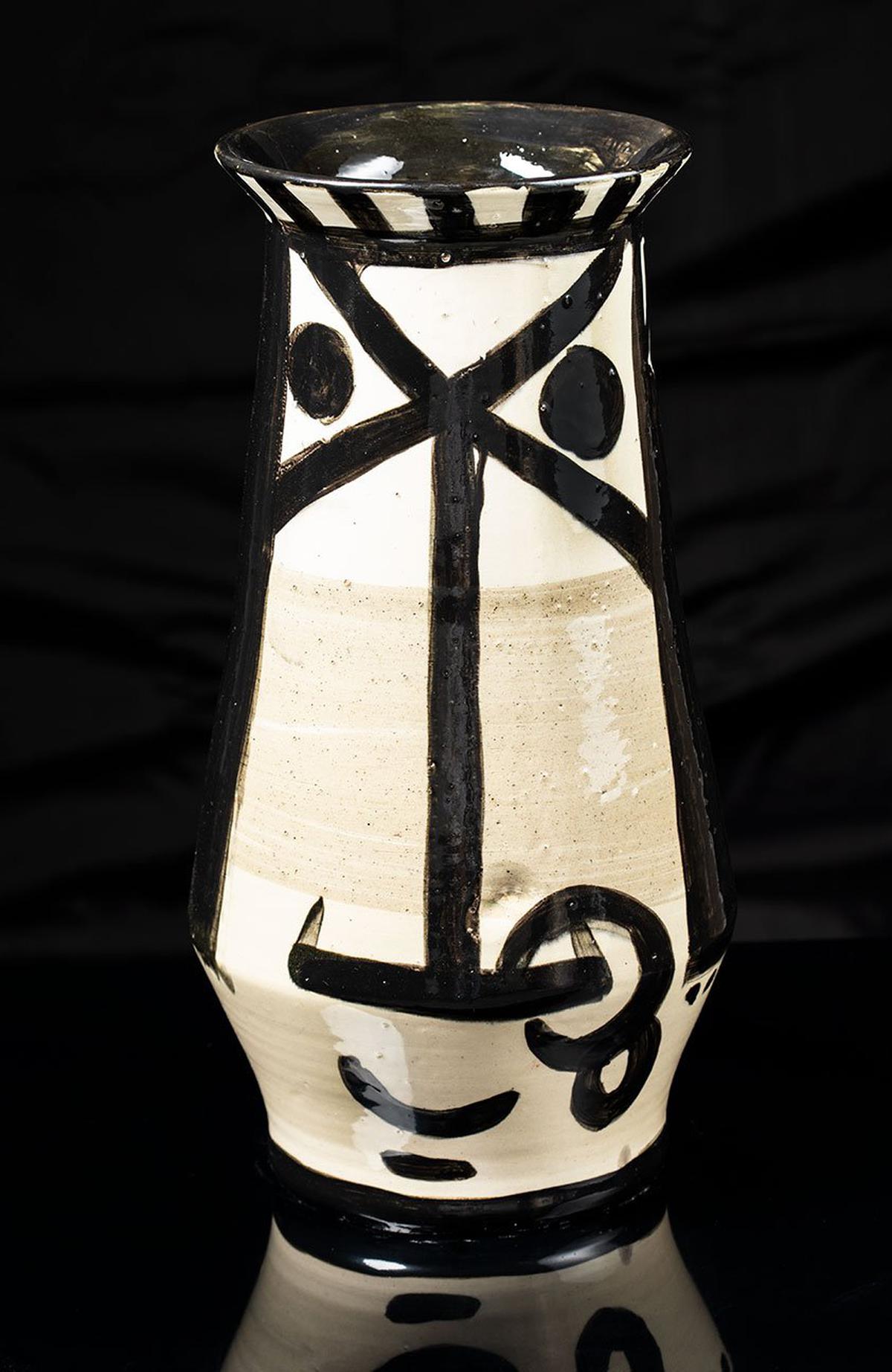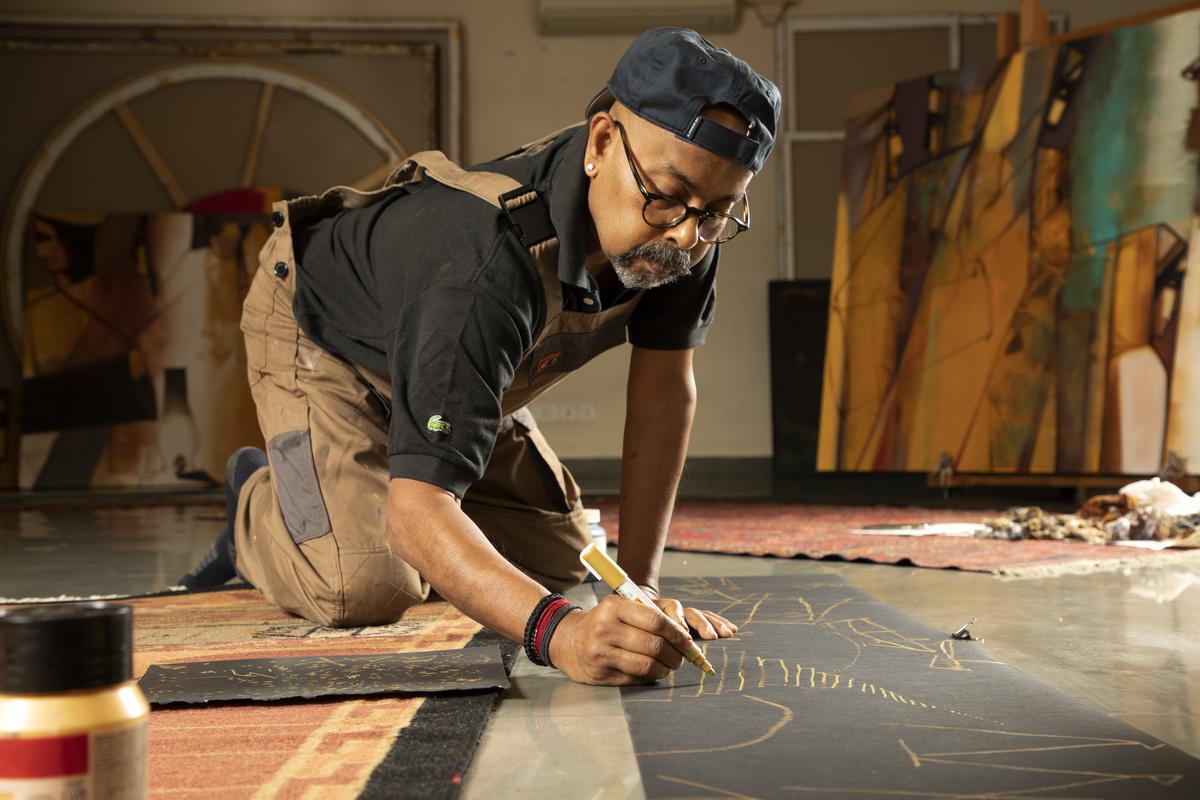The Padma Shri awardee shares what has sustained him through the years; he says the road to happiness is through colours that glow in the light
The Padma Shri awardee shares what has sustained him through the years; he says the road to happiness is through colours that glow in the light
Sculptors working like angels possessed. Fantastical Durga idols arranged in an order. Entire spaces flooded with colour.
Paresh Maity’s earliest memories of art are watching artists crafting Durga idols in his village, Tamluk, West Bengal. Does he remember the form of those magnificent sculptures? How many were they? Did a certain form or pattern appeal to him particularly? These questions collapse when Maity pauses and says, almost in a whisper: “I was just seven and hypnotised by those artisans. At that time, I didn’t know what art was and had no vocabulary to make sense of what I was witnessing.”
ALSO READ Different strokes
On display at Bikaner House in Delhi and presented by Art Alive Gallery, Maity’s retrospective ‘Infinite Light’ showcases more than three decades of work — from towering sculptures in bronze that quirkily toy with gravity, to amorphous ceramics, to canvases dipping in the ambient beauty of light-fuelled landscapes. “I don’t see it as a retrospective,” says Maity. “To me, it’s a celebration of 32 years of my journey as an artist.”

A snapshot from Paresh Maity’s ‘Nirvana’
| Photo Credit: Special Arrangement
Grounding with ceramics
From the alleyways of Tamluk to crafting narratives on an epic scale, for Maity it all started with clay and pastel watercolours on school notebooks. “I would make miniature clay models and sell them at my village fair,” he recounts. “Slowly, the colours crept in and I started using watercolours on my rough school notebooks. I realised then that watercolour on paper is perhaps the most difficult medium to exist.”
It was a few years later, when Maity had nearly perfected his singular artistic vision, that other mediums entered his frame of reference. With ceramics, his relationship hinged on the twin pillars of friendship and form — almost every year, he visited the remote village of Maihar in Madhya Pradesh to work at the ceramic foundry of his close friend.
An installation by Paresh Maity
| Photo Credit: Special Arrangement
“I love the countryside because I believe there is so much beauty in it,” he says. “I grew up with clay and the foundation of ceramics is also in clay. You are always moulding, failing, starting again. If I’ve created ten raw ceramic pieces, eight of them break in the furnace and barely two survive.”
Working with ceramics has been a grounding experience for Maity who believes that he is a “patient” artist — not anxious to see the final results, cultivating his art, and always letting light dictate everything he does. “Light is life and it is important to me on a technical level as most of my work features water bodies. You cannot paint landscapes without letting light liberate you.”
It only takes a sunrise
Whether it’s depicting the sun-baked ghats of Ganga or the whimsical dynamism of the Howrah Bridge, Maity insists that the road to happiness is through colours that glow in the light. There is a psychological dimension to Maity’s approach too — for him to feel at the top of the world, it’s good enough to witness a perfect sunrise illuminating a clear sky. “Can you sustain without light? I don’t think so. You look at people who get quite literally depressed at the onset of winter.”

A ceramic by Paresh Maity
| Photo Credit: Special Arrangement
In the coming years, Maity hopes to engage with form and function on a grander scale. His bronze sculptures, naturalist and Dadaist in equal measure, are going to move into public spaces. “It’s important for me to do public art because that’s the only way I see art getting accessible to the wider audience.”
Maity wanted the retrospective to be a museum show, with music, art, installations, books. “It all comes together as a multi-sensorial experience. Even the iconic staircase of Bikaner house, which is usually dark and neglected, has been turned into a piece of art.”

Maity at work
| Photo Credit: Special Arrangement
It is no surprise that one of Maity’s most popular works is also public art — an 860-feet-long mural, ‘Indian Odyssey’, at the Indira Gandhi International Airport, Delhi. It is one of the largest in the world that marries watercolour, oil, acrylic, sawdust, and all kinds of glues. A fitting tribute to Gandhi’s Dandi March, it’s a staggering achievement.
“To me, art is social. I have always wanted to celebrate the social glue that brings us all together, celebrating the things that bind us. And not the differences.”
On show till November 1 8at Bikaner House, November 12-25 at India Habitat Centre, and December 1-January 10 at Art Alive Gallery.
The writer is an author and editor based in Mumbai.”
For all the latest Entertainment News Click Here
For the latest news and updates, follow us on Google News.
